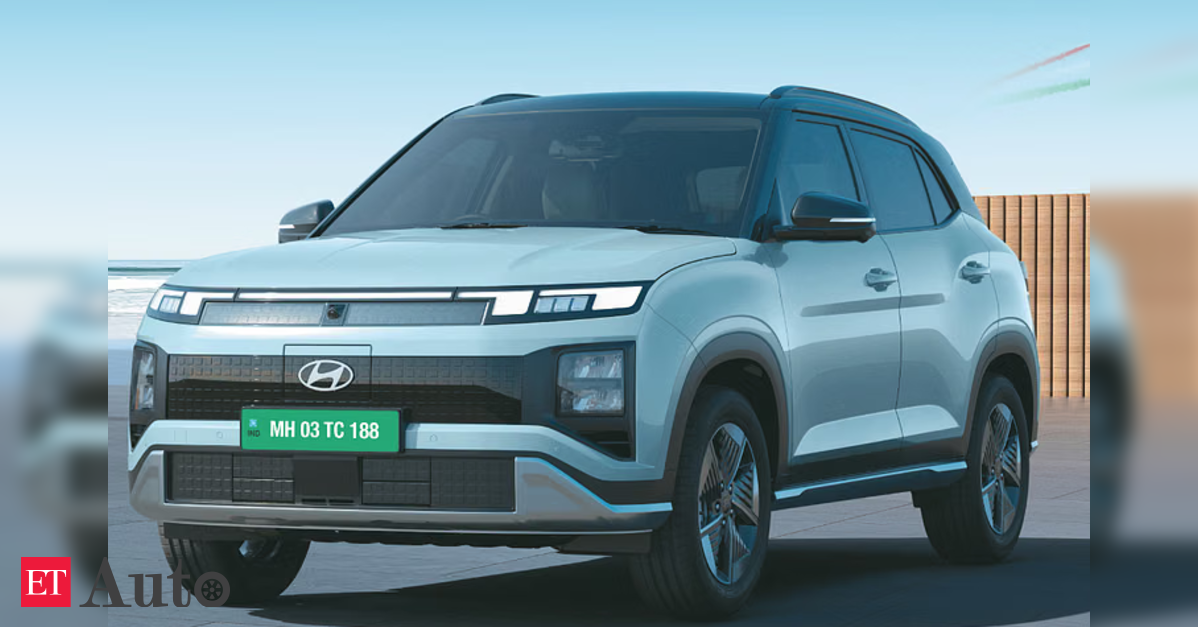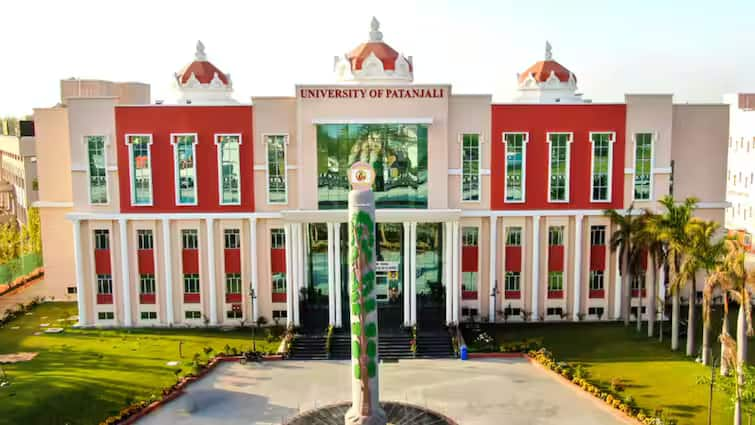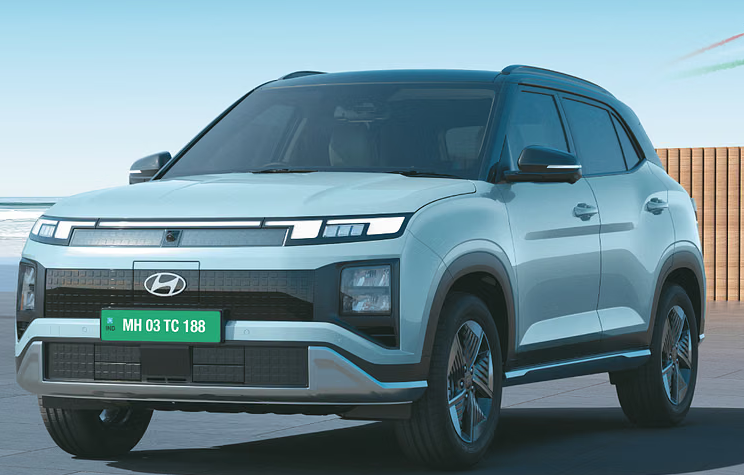 Hyundai Creta EV
Hyundai Creta EVHyundai Motor has every reason to be pleased with its 30-year showing in India, especially when it has clearly emerged as the only serious challenger to Maruti Suzuki. Only in recent months has the Korean carmaker been facing competitive pressure from Tata Motors and Mahindra & Mahindra.
Hyundai, however, is determined to hang in there and fight it out, given the recent spate of announcements made on its Investor Day in Mumbai. The company’s global President and CEO, José Muñoz, was personally present on this occasion, where he unveiled the roadmap ahead. This included investments of ₹45,000 crore along with a slew of new models in the electric and hybrid space.
The Hyundai chief was categorical that chasing numbers would not be the top priority since a healthy balance sheet was more important, especially with the Indian arm now a listed entity.
“If you look globally, in all developed markets, it is very difficult to find companies that have higher than 15 per cent share,” he told reporters at a roundtable.
According to Muñoz, there was no point setting a high target merely for achieving more market share because “if you increase your share, you don’t make money and there is no relevance”. Hence, it was always a better option to have “good quality of sales, good net revenue management that is sustainable, and maintain a very high level position in terms of share, because 15 per cent is not bad at all”.
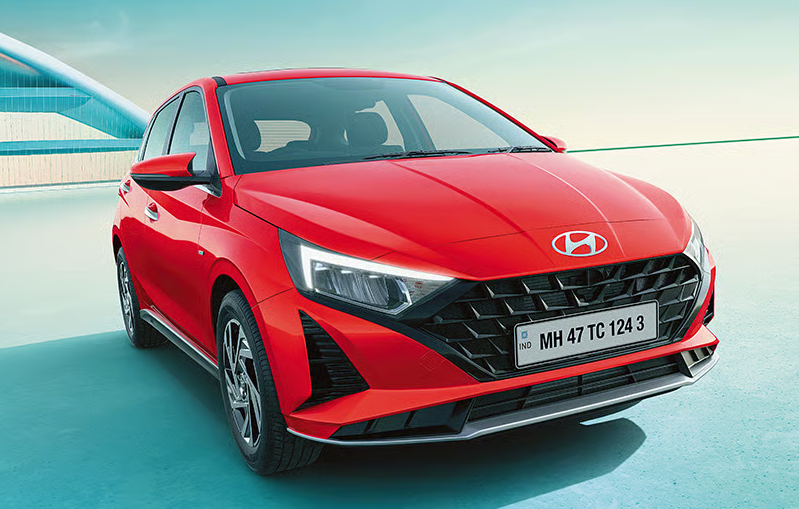
Market realities
On the face of it, this observation by the Hyundai CEO makes sense in the backdrop of the realities of the Indian automobile market. The landscape has changed dramatically since 1998, when Santro was first unveiled at the Delhi Auto Expo as the new offering in the compact car segment, where Maruti was the monarch with its 800 and Zen models. This was also the time when Telco (now Tata Motors) was the virtual showstopper with its Indica.
Also Read: Hyundai charts ₹45,000-crore India roadmap with 26 launches, deep localisation push by 2030
Yet, it was Hyundai that eventually prevailed in the market with Santro, even though Indica initially created a big splash but could not sustain the momentum in later years. The Indian market was fiercely competitive, and Hyundai’s never-say-die spirit is evident against the backdrop of companies like Peugeot and Daewoo bowing out, with General Motors and Ford following suit in more recent times.
Jacques Manlay, who was MD when Peugeot decided to shut its India operations in 1997, barely three years after it had set up shop, had this to say during a conversation with this writer in Paris. “I remember being particularly impressed with Hyundai, which had also entered the country in 1996. The company was focusing extensively on localisation since this was imperative for a cost-effective operation to be in place.”
In contrast, Peugeot (like other automakers from the West) was still heavily reliant on imported kits, which would then be assembled at its Kalyan plant. According to Manlay, this comparatively casual attitude was because the company, like other global automakers, was doing well in its home market.
Western companies and their complacency
India was a different kettle of fish, and there was really no compelling reason to step on the gas. Simply put, this meant that companies like Peugeot did not see why it was important to have a India-specific strategy when things were pretty much on course back home in Europe.
For a market that was more familiar with Japanese and American brands, a name like Hyundai was quite alien in contrast.
Yet, customer connect became stronger thanks to the Tall Boy Santro, which stood out as an attractive differentiator, coupled with some smart branding initiatives, which included roping in Shah Rukh Khan as brand ambassador.
In an interview with this writer, the superstar had spoken fondly of his decades-long association with the Korean carmaker. He was absolutely categorical that it was the product that finally mattered.
“I am a big believer that the product works because of the product, and not because you are the ambassador or face that represents it. If the product is good, it doesn’t make a difference how you market it or who you market it to. People will come for it because the quality is good,” he explained.
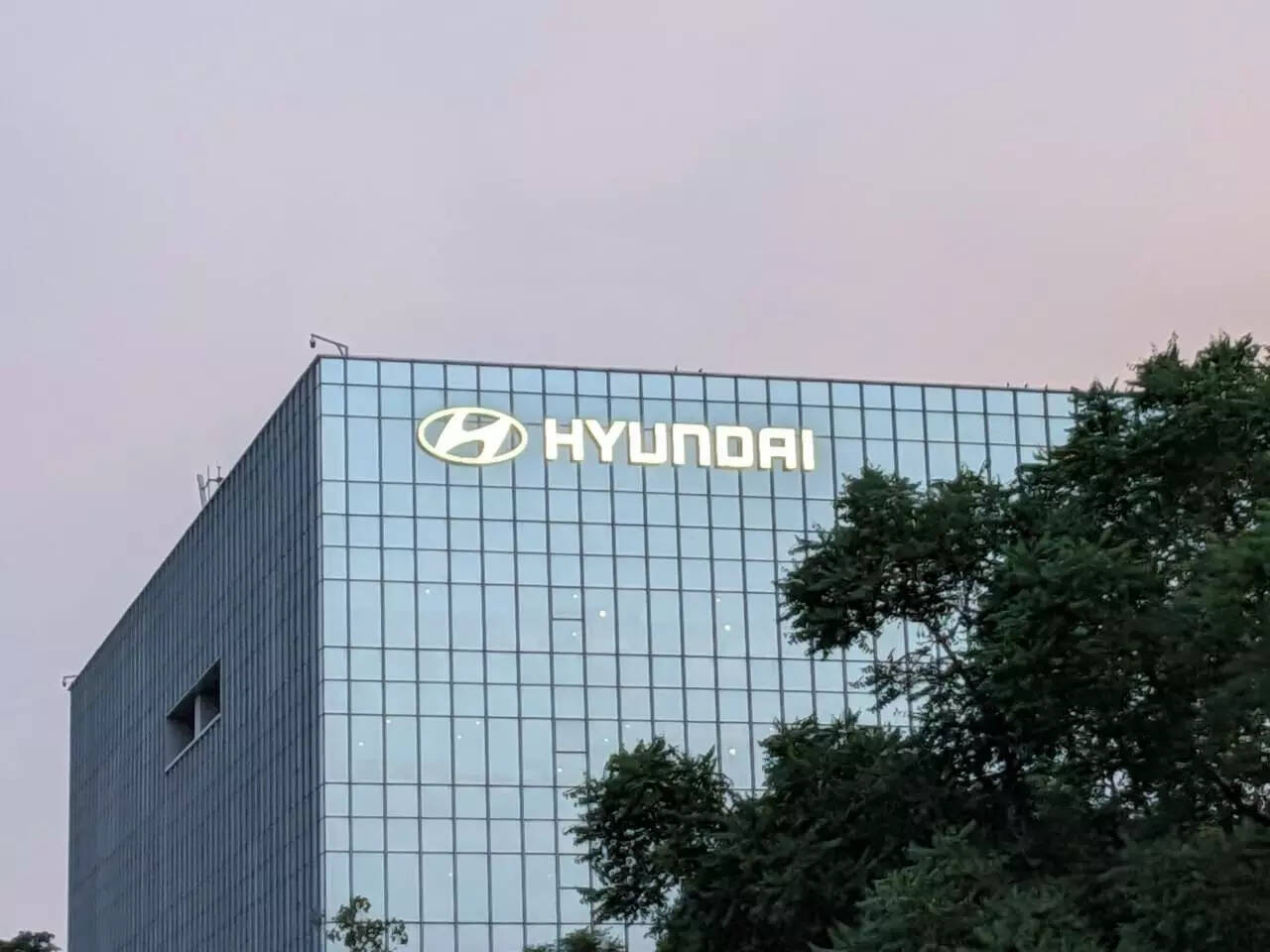
Focus on the core
As SRK put it, “That is the learning experience for me as an actor and a professional. Just work at your core and try to be the best product possible that changes lives, even as an actor. I think that is what matters finally.”
In SRK’s view, his evolving role with Hyundai was but natural for brands that stood for longevity. As he said, it was perfectly in order to be aggressive, happy and jumpy at 15 years. At 21, there is a sense of vanity setting in while achievements follow in the 25-30 year space.
“Beyond this, you start feeling humble about the fact that people find you so good. I think Hyundai is in that space where everyone knows that we are good looking, innovative and fantastic,” he said.
There was a sense of wistfulness when the topic veered around to the Santro, whose production had been discontinued. Hyundai brought it back in a renewed avatar, but could not create the same magic again.
“I miss the car, the name and thought. Of course, I understand and fully respect the fact that innovation has to come in and we need to cater to needs. Maybe sometimes, the Big Boy has to back away to let the others shine and then make a comeback,” quipped SRK.
Also Read: Hyundai Motor India names Tarun Garg as new MD & CEO, effective January 2026
Staying ahead of the curve
While the superstar continues his association with Hyundai, other celebrities have also come on board, keeping in mind the diverse needs of a growing customer base.
The company is also facing increased competition, which is precisely why Muñoz reiterated at the Mumbai event that it was important to offer a host of options in technology and powertrains as part of its efforts to stay ahead of the curve.
He admitted that there was a time when carmakers including Hyundai believed that electrification was going to be “the kind of definite evolution” but soon realised that it would take time for consumers to adjust to new technologies. The transition to electric is now happening through hybrids.
“In our case, we are very flexible not here to determine what the customers need to drive but to adjust to what they want. If customers ask for more EVs, we will produce more EVs and if they want hybrids, we will produce hybrids,” said Muñoz.
In his view, there were two sides to the Indian automotive market: one was more global, featuring SUVs and similar vehicles, while the other comprised two-wheeler users who would eventually graduate to cars. “When you look at the cars running here in India, they are, for the most part, very humble vehicles, small ones, but they are reliable, solid, and the cost of ownership is very low,” explained Muñoz.
Entry space remains relevant
While Hyundai would be an active participant in the SUV market, it was not going to abandon the entry space, which “makes us more competitive and allows us to continue to be very popular”. Any customer driving a reliable entry-level Hyundai would comfortably transit to a bigger SUV within the same brand umbrella.
“This is because there is no risk, they already know the brand, and we are going to give you good service,” he continued. The Hyundai chief also acknowledged the evolution of local brands, which offer great design, quality, and reliability.
“I am really impressed with the latest SUVs and their overall capabilities. We welcome competition and are better when we are challenged. In this market, we have to compete with among the best manufacturers in the world, and I think this makes us better,” said Muñoz.
The remainder of the decade will see an aggressive Hyundai ramp up volumes to over one million units annually with its second plant in Maharashtra — acquired from General Motors — complementing the one in Chennai. By that time, the overall volumes in India’s automobile arena could be well over six million units, and Hyundai will more than have its share of competitive pressure from both Tatas and Mahindras.
The China question
So far, there is no indication whether policymakers in Delhi will be inclined to allow fresh investments from Chinese carmakers. The GM plant in Pune was actually earmarked for Great Wall Motors, but then political equations between India and China suffered, and the company was forced to abandon its plans.
Right now, there is some leeway, as in the case of SAIC Motor joining hands with the JSW group to keep the India operations going at MG Motor in Gujarat. Similarly, Stellantis is set to launch products from China’s Leapmotor in India next year.
If India and China decide to bury the hatchet and investments into the auto sector are given the go-ahead, the competitive intensity will only increase. How this will affect the prevailing leadership equations in India, stretching across Maruti, Hyundai, Tatas and Mahindras, will be interesting to see. Right now, Chinese car brands are on overdrive across the world, and India remains their only elusive market.

